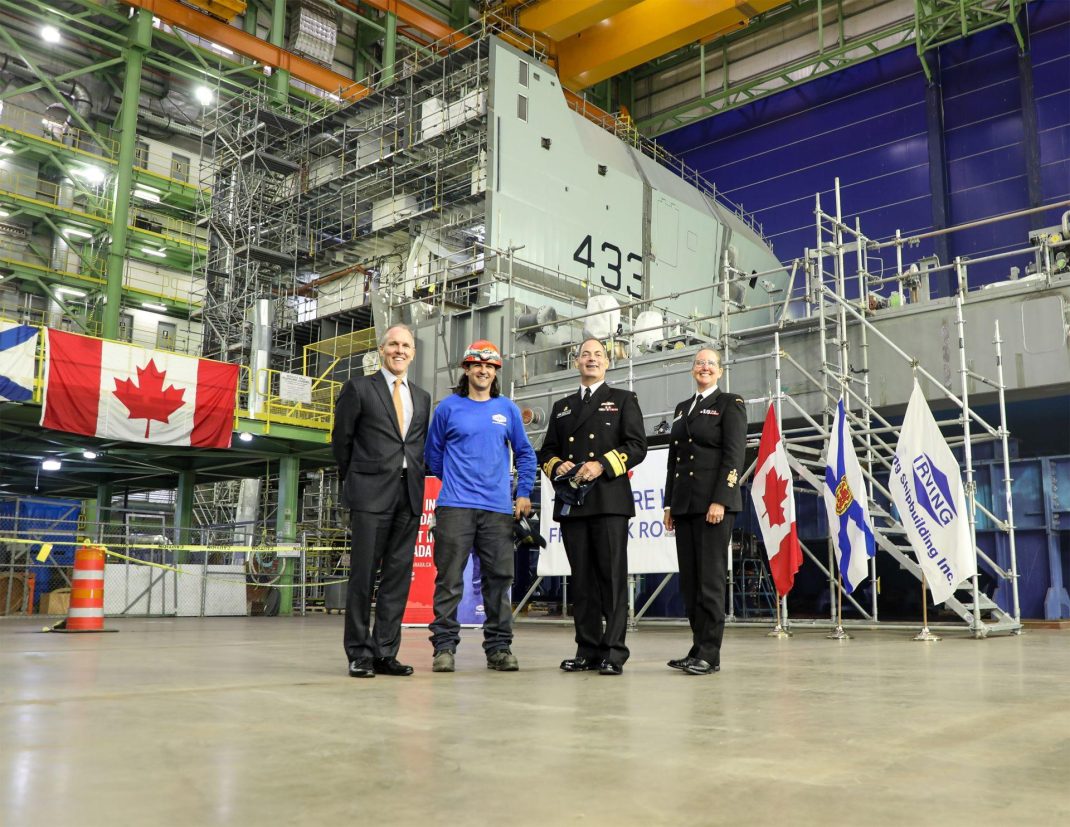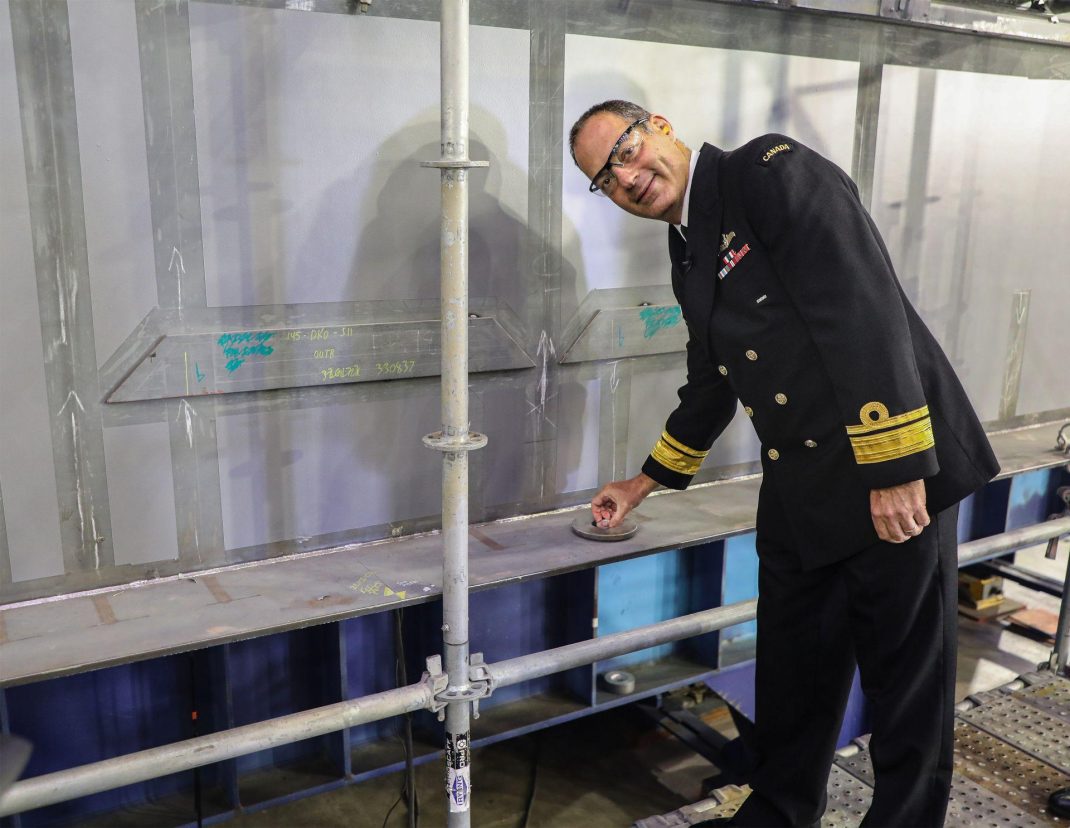Our Stories
At a ceremony today at Halifax Shipyard, Rear Admiral Brian Santarpia and Ross Langley, Vice Chairman of Irving Shipbuilding marked the official keel laying of the fifth Arctic and Offshore Patrol Ship (AOPS) – The future HMCS Frédérick Rolette.
The keel laying ceremony is a centuries-old tradition, dating back to the ancient Romans, that marks the formal start of a ship’s construction. Today’s ceremony included the tradition of the welding of a coin to the hull of the ship to bring luck to the captain and crew during the life of the ship. The coin, selected by the Royal Canadian Navy and presented by Rear Admiral Brian Santarpia, Commander of Maritime Forces Atlantic (MARLANT) and Joint Task Force Atlantic (JTFA), was welded in place by Eric Theriault, a French Canadian from Belliveau Cove, Nova Scotia whose Acadian roots date back generations. Rear Admiral officially declared the hull “well and truly laid” at the conclusion of the ceremony.

Charles Frédérick Rolette was born in Québec City on September 23, 1785 and joined the Royal Navy as a midshipman while a young teen. He distinguished himself during the War of 1812, earning a reputation as a bold and quick-thinking officer. The historical Canton of Rolette, located on the south shore of the St. Lawrence River, roughly 50 km southeast of the town of Montmagny, Québec, near the American border, was established in 1868 in his honour.
Just before the outbreak of the War of 1812, Rolette was posted to Amherstburg, Upper Canada (now Ontario) as Lieutenant in command of the brig General Hunter. When word of the outbreak of war reached Amherstburg on July 3, 1812, Rolette acted immediately, capturing an American vessel, the Cuyahoga, before the American crew even realized that their country had declared war on Britain. This was the first action of the War of 1812 and a significant prize as the Cuyahoga carried the American commander General William Hull’s papers and dispatches. This provided the British with significant early intelligence on American strength and deployment.

At a time when it was not yet customary to award medals to military personnel in recognition of conspicuous gallantry, Lieutenant Rolette was mentioned in dispatches by senior military officers on several occasions during the course of the war. At the capture of Detroit, Major-General Isaac Brock praised Rolette’s conduct in the highest terms: “I have watched you during the action,” said the general, “you behaved like a lion, and I will remember you.”
The future HMCS Frédérick Rolette will be 103.6 metres in length, have a 19-metre beam, displace 6,615 tonnes and will be composed of 440,000 parts.
Halifax Shipyard is completing six Arctic and Offshore Patrol Ships for the Royal Canadian Navy and will then build two AOPS variants for the Canadian Coast Guard, followed by 15 Canadian Surface Combatants for the Navy.
To date, Ships for Canada at the Halifax Shipyard has delivered over $4.7 billion in investments across Canada and is generating over 8,300 jobs (direct and indirect). Halifax Shipyard is continuing to hire as it prepares to build the Canadian Surface Combatants in 2024.

